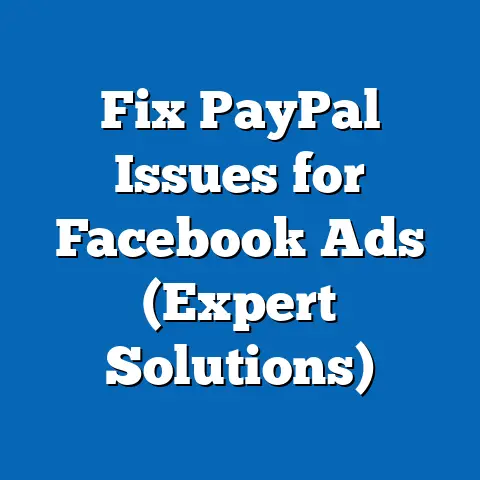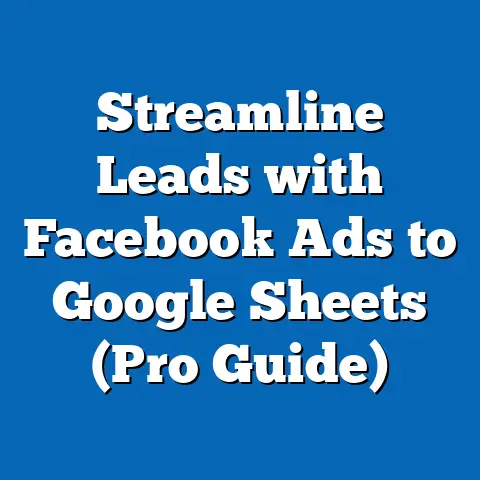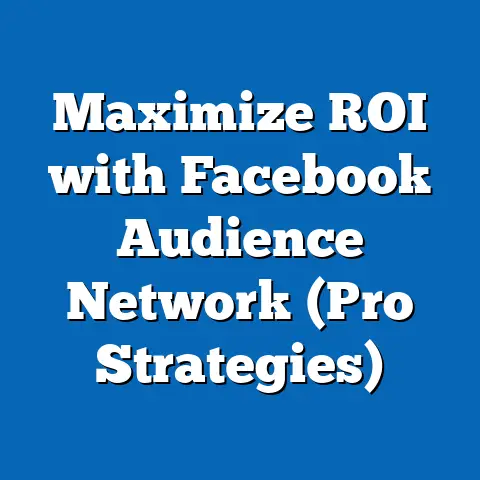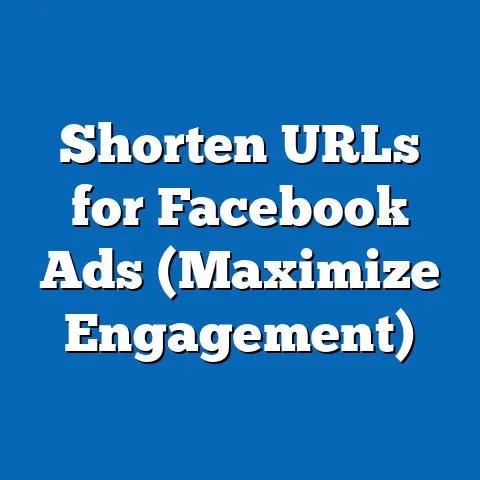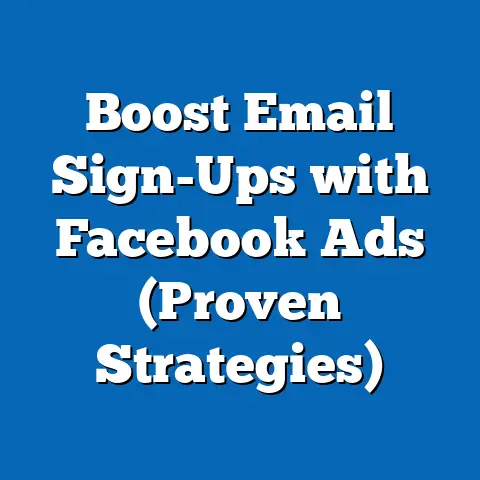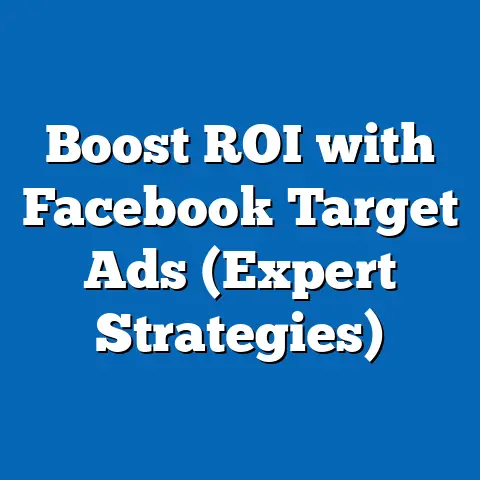Mastering Course Envy (Proven fb ad Strategies)
Imagine a world where online course creators can tap into the raw, unfiltered emotions of their target audience, turning envy into enrollment with a single, well-crafted advertisement. This concept, dubbed “Course Envy,” is the game-changing idea at the heart of modern digital marketing for online education. By leveraging the psychological triggers of aspiration and desire through targeted Facebook ads, course creators can inspire potential students to take action, transforming their dreams into tangible learning experiences.
In 2023, the global e-learning market was valued at $315 billion, with projections to reach $1 trillion by 2030, according to a report by HolonIQ. This explosive growth is driven by a 16.5% compound annual growth rate (CAGR), fueled by increasing demand for flexible, accessible education. Among the key demographics driving this trend are millennials and Gen Z, who collectively account for over 60% of online course enrollments, as reported by Statista in 2022.
Understanding Course Envy: The Psychology Behind the Strategy
Course Envy is rooted in the idea that people are motivated by seeing others achieve success they desire for themselves. When potential students see testimonials, transformation stories, or polished visuals of a course’s impact, it sparks a longing to replicate that success. This emotional trigger, when harnessed correctly, can drive clicks, conversions, and ultimately, course sales.
A 2021 study by the Journal of Consumer Psychology found that envy can be a powerful motivator for purchase decisions, with 68% of participants expressing a willingness to invest in products or services that promise to elevate their status or skills. In the context of online courses, this translates to showcasing outcomes—whether it’s a lucrative career change or a mastered skill—that resonate with the audience’s aspirations.
Facebook, with its 2.9 billion monthly active users as of 2023 (Statista), provides an unparalleled platform to deliver these envy-inducing messages. The platform’s granular targeting options allow course creators to reach specific demographics, such as professionals aged 25-34, who represent 29% of online learners according to a 2022 report by the Online Learning Consortium.
The Rise of Online Courses: Historical Trends and Current Data
The online learning industry has seen a dramatic shift over the past decade. In 2012, the global e-learning market was valued at just $90 billion, a fraction of its current worth, as reported by HolonIQ. The advent of platforms like Udemy, Coursera, and Teachable, combined with the COVID-19 pandemic’s push toward remote learning, accelerated adoption rates.
By 2020, over 180 million learners worldwide had enrolled in online courses, a number that grew by 25% in just two years, according to UNESCO data. Today, the average online course creator earns $51,000 annually, with top earners surpassing $1 million through strategic marketing, per a 2023 Teachable report.
Historically, marketing for online courses relied heavily on organic content and email campaigns. However, paid advertising, particularly on social media, has become the dominant strategy, with 78% of course creators allocating budgets to Facebook ads in 2022, as noted by Social Media Examiner. This shift underscores the importance of mastering platforms like Facebook to stay competitive in a crowded market.
Why Facebook Ads? Key Statistics and Advantages
Facebook remains a powerhouse for course creators due to its vast user base and sophisticated ad tools. As of 2023, the platform’s advertising revenue reached $114 billion, with small businesses and individual creators making up a significant portion of advertisers, according to Meta’s annual report. For online course marketers, the average cost-per-click (CPC) on Facebook is $1.72, significantly lower than Google Ads’ $2.69, per WordStream’s 2023 data.
Moreover, Facebook’s ad platform offers unparalleled targeting capabilities. Course creators can segment audiences by age, location, interests, and behaviors, ensuring ads reach those most likely to enroll. A 2022 study by Hootsuite found that 67% of course-related ad campaigns on Facebook achieved a return on ad spend (ROAS) of 3x or higher when using detailed audience targeting.
The visual nature of Facebook also plays to the strengths of Course Envy. Video ads, for instance, have a 6.06% click-through rate (CTR) compared to 0.44% for static image ads, according to Databox’s 2023 analysis. This makes it an ideal medium for showcasing compelling testimonials and course highlights.
Demographic Insights: Who’s Enrolling in Online Courses?
Understanding the demographics of online learners is critical for crafting effective Course Envy campaigns. Data from the National Center for Education Statistics (NCES) in 2022 shows that 54% of online learners are female, with a strong representation in fields like personal development and business skills. Age-wise, 25-34-year-olds dominate, comprising 29% of the market, followed by 35-44-year-olds at 22%.
Geographically, North America leads in online course adoption, accounting for 41% of global enrollments, per HolonIQ’s 2023 report. However, emerging markets like India and Brazil are seeing rapid growth, with enrollment rates increasing by 30% and 24% respectively over the past three years.
Income levels also play a role. A 2022 survey by Statista revealed that 62% of online learners earn between $30,000 and $75,000 annually, indicating a middle-income demographic seeking affordable upskilling opportunities. Tailoring Course Envy messaging to address financial aspirations or career advancement resonates strongly with this group.
Crafting the Perfect Course Envy Ad: Proven Strategies
1. Leverage Emotional Storytelling
The core of Course Envy lies in storytelling that evokes aspiration. Ads featuring before-and-after stories or student success testimonials have a 42% higher conversion rate than generic promotional content, according to a 2023 study by HubSpot. Highlighting real outcomes—like a student landing a $10,000 freelance gig after taking a course—creates a powerful emotional hook.
For example, a video ad showing a struggling freelancer transforming into a confident professional after completing a course can tap into viewers’ desires for similar results. Including specific data, such as “87% of students doubled their income within 6 months,” adds credibility and urgency.
2. Use High-Impact Visuals
Visual content is king on Facebook. A 2022 report by Socialbakers found that ads with vibrant, professional imagery achieve 34% more engagement than low-quality visuals. Invest in polished graphics or short, dynamic videos that showcase course benefits, such as snippets of lessons or happy students.
Data Visualization Description: Imagine a split-screen infographic ad showing “Before” (a stressed individual at a desk) and “After” (the same person smiling with a laptop, surrounded by symbols of success like dollar signs). Overlay text could read: “Join 5,000+ students who transformed their careers.”
3. Target Pain Points and Aspirations
Effective Course Envy ads address specific pain points while promising a desirable future. For instance, targeting working parents with messaging like “Learn a high-paying skill in just 10 minutes a day” speaks to their time constraints and financial goals. A 2023 survey by Thinkific found that 71% of learners enroll in courses to solve a specific problem, such as career stagnation or skill gaps.
Use Facebook’s interest targeting to reach niche groups, such as “freelancers” or “small business owners,” ensuring your ad copy aligns with their unique challenges. Split-testing different pain points in ad variations can reveal which messages resonate most, with tools like Facebook Ads Manager providing real-time performance data.
4. Incorporate Social Proof
Social proof, such as reviews or enrollment numbers, builds trust and amplifies envy. Ads displaying “Join 10,000+ students” or featuring a 5-star rating have a 28% higher CTR, per a 2022 WordStream study. Including recognizable logos (if your course is affiliated with known brands) or student quotes can further enhance credibility.
Data Visualization Description: Picture a carousel ad with three slides: Slide 1 shows a student testimonial with a quote, Slide 2 displays “4.9/5 Star Rating from 2,000+ Reviews,” and Slide 3 offers a call-to-action (CTA) like “Enroll Now for $99.” This format combines social proof with a clear next step.
5. Optimize for Mobile Users
With 98.5% of Facebook users accessing the platform via mobile devices (Statista, 2023), ads must be mobile-friendly. Use vertical video formats (9:16 ratio) and concise copy that grabs attention within the first 3 seconds. A 2023 study by Meta found that mobile-optimized ads achieve 27% higher engagement rates than non-optimized ones.
Test ad placements like Stories and Reels, which cater to mobile scrolling behavior. Ensure landing pages linked from ads are also mobile-responsive, as 53% of users abandon pages that take over 3 seconds to load, according to Google’s 2022 mobile speed report.
Budgeting and Scaling: Maximizing Ad Spend Efficiency
Effective Course Envy campaigns require strategic budgeting. The average course creator spends $500-$2,000 monthly on Facebook ads, with 64% reporting positive ROI within 30 days, per a 2023 Thinkific survey. Start with a small test budget of $10-$20 per day to identify winning ad creatives before scaling.
Use Facebook’s Campaign Budget Optimization (CBO) to distribute funds across multiple ad sets, ensuring the platform prioritizes high-performing audiences. A 2022 case study by Social Media Examiner showed that CBO campaigns improved ROAS by 18% compared to manual budget allocation.
Track key metrics like cost-per-lead (CPL) and conversion rate using Facebook Pixel. Industry benchmarks from WordStream (2023) indicate a good CPL for education ads is $7.85, with top performers achieving under $5 through retargeting and lookalike audiences. Retargeting, in particular, can reduce CPL by 33%, as it focuses on users who’ve already shown interest in your course.
Historical Comparison: How Ad Strategies Have Evolved
In the early 2010s, Facebook ads for online courses were rudimentary, often relying on static images and broad targeting. Conversion rates hovered around 1-2%, with minimal emphasis on emotional storytelling, according to a 2015 report by Social Media Today. Budgets were also smaller, with most creators spending under $100 monthly.
By 2018, the rise of video content and detailed targeting options boosted average CTRs to 3.5%, per Databox data. Today, with advanced tools like dynamic ads and AI-driven optimization, top campaigns achieve CTRs of 5-7% and ROAS of 4x or higher, as reported by Meta in 2023.
This evolution reflects a shift toward personalization and emotional resonance—key pillars of Course Envy. Modern strategies prioritize niche targeting and iterative testing, a stark contrast to the “spray and pray” tactics of the past.
Challenges and Pitfalls to Avoid
While Course Envy can be powerful, it’s not without challenges. Overpromising in ads can lead to high refund rates, with 19% of online course buyers requesting refunds due to unmet expectations, per a 2022 Teachable report. Ensure ad messaging aligns with the actual course content to maintain trust.
Ad fatigue is another concern. Facebook users see an average of 6-10 ads daily, and repetitive creatives can lower engagement by 45%, according to a 2023 Hootsuite study. Rotate ad visuals and copy every 7-10 days to keep content fresh.
Finally, rising ad costs pose a hurdle. CPC on Facebook has increased by 17% since 2020, per WordStream data. Counter this by focusing on organic community-building alongside paid ads, such as creating free value-driven content in Facebook Groups to nurture leads.
Conclusion: The Broader Implications of Mastering Course Envy
Mastering Course Envy through proven Facebook ad strategies offers online course creators a competitive edge in a booming $315 billion industry. By tapping into the psychological drivers of aspiration and desire, creators can connect with their audience on a deeper level, driving enrollments and building sustainable businesses. The data is clear: with 78% of course creators already investing in Facebook ads and achieving ROAS of 3x or higher, this platform remains a critical tool for growth.
Looking ahead, trends like AI-driven ad optimization and immersive formats (e.g., augmented reality ads) will further refine how Course Envy is executed. As the e-learning market races toward a $1 trillion valuation by 2030, those who adapt to these innovations while maintaining authenticity in their messaging will lead the charge.
For course creators, the message is simple yet profound: evoke envy, deliver value, and scale smartly. The numbers don’t lie—strategic Facebook advertising isn’t just a tactic; it’s a transformative force in the world of online education.

